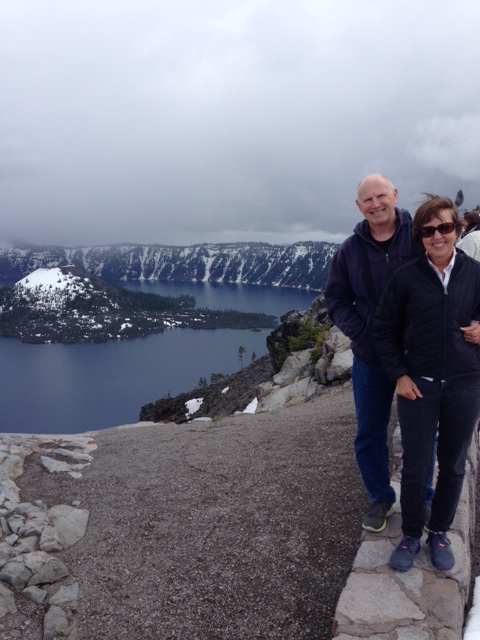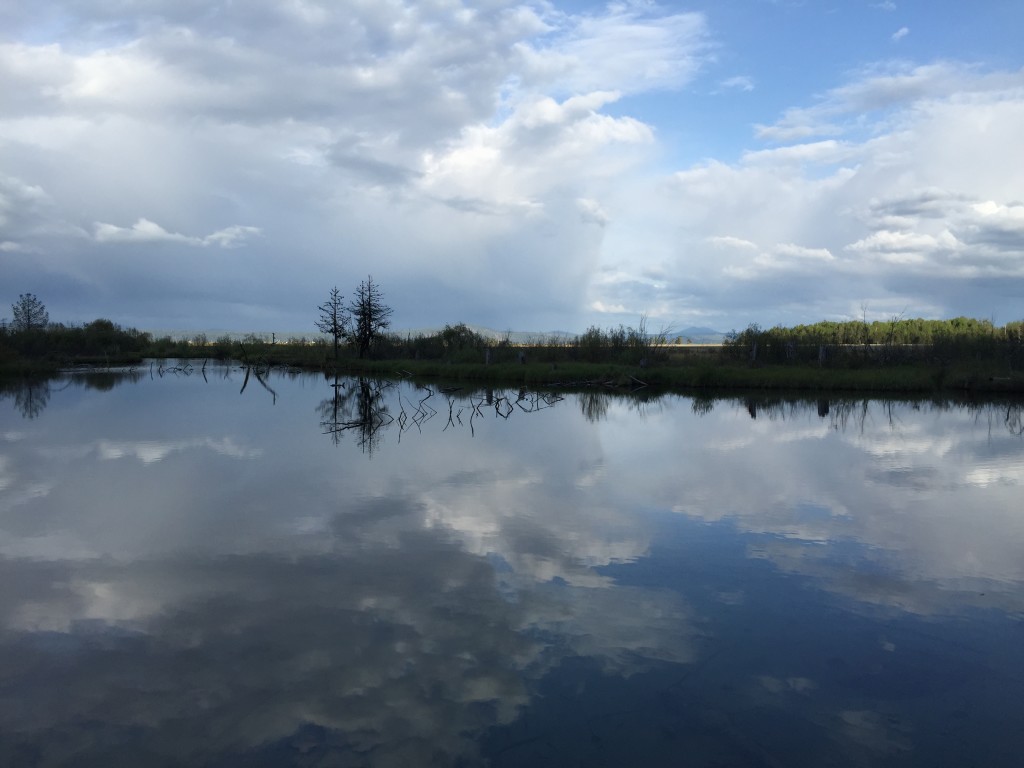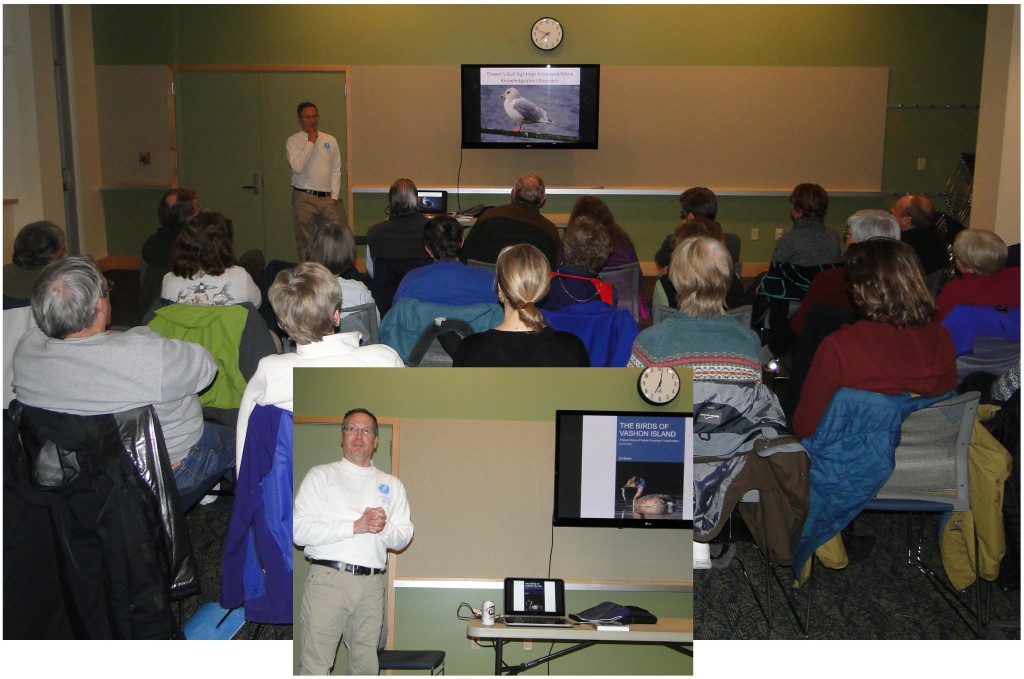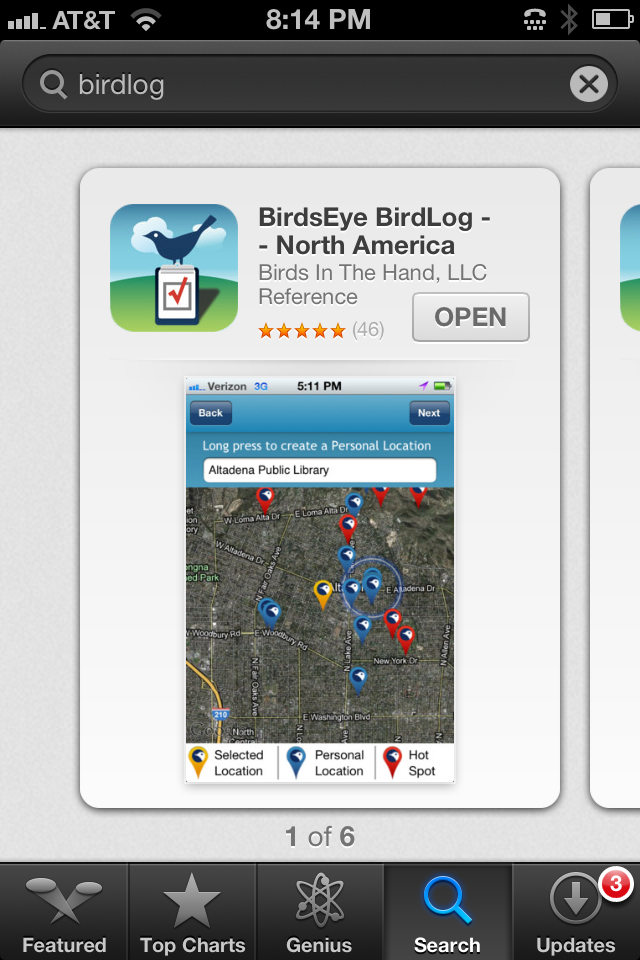Kay and I are headed south on a road trip to SoCal and points to and from, and I wanted to see Crater Lake National Park on the way.
Given that this “lifer” national park was really near Klamath Falls we decided to try for another lifer the Yellow Rail. E-bird makes treks like this much easier as YERA had been seen the last three days at Mare’s Egg Spring, an easily accessible place about midnight each night. This spot is literally beside the road just a few miles off Hwy 97 south of Crater Lake and North of Klamath Falls, OR. Our iPhone google maps took us right to the exact spot using the e-bird coordinates. It was good to have these as there was no sign or other way to know we were there. There is a nice parking “wide spot” in the road just across from the location, but no other marking at all. This was the view from our lawn chairs.
It is an easy day trip to get to this location, but because you have to find the bird near dark an overnight stay or all-night ride home is needed. We left home at 7 AM and had some business to do in Portland, so left there at 11 AM. We got to Crater Lake NP by 4 PM where it was snowing lightly at first, but heavier as time passed. It was also a bit foggy but I still enjoyed seeing the crater-topped volcano within a crater-topped volcano that makes this spot so photogenic and magical. We didn’t want to get snowed in so made it a brief stop, and headed to Mare’s Egg Spring. We got there by 6:30, had a picnic in the car while listening to Sandhill Cranes bugling in the meadows south of the spring.
Mare’s Egg Spring is a pretty special place. It is named after the blue-green Mare’s Egg Algae that specializes in very cold water springs like this. On this somewhat overcast evening, with waning light I could not detect the special color it is famed for, but still the large spring surrounded by bushes and sedge-like grasses seemed like a perfect place for Yellow Rail. I carried lawn chairs down to the marsh edge on a very walkable path, and got us set up for a long wait. The guides say the Yellow Rail is strictly nocturnal and calls primarily after dark, so I was surprised when on my way back to the car for blankets to keep us warm I thought I heard the YERA ticking call. I rushed to get Kay to finish her dinner and come down. We settled in and accumulated a nice list including Virginia Rail, Sandhill Crane, RT Hawk, Bald Eagle, Downy woodpecker, Belted kingfisher, RW blackbird, Song sparrow, and Barn swallow in just a brief wait. About 7:40 PM we started to hear the classic Yellow Rail ticking call. The cadence is just as described, a two tick series at a moderate pace followed by a rapid three tick series, which is repeated over and over with barely any pauses. It seemed like once one bird started to call others would chime in most times. From our spot by the marsh edge we could hear at least two birds moderately far away and another much closer. Later we walked down the road to see if we could get closer, and there were another three birds that seemed different from there three, much closer to the road and easier to hear. Here is our ebird list Here is an iPhone “video” of the rails calling.
All during this we saw 8 elk in the meadow between us and the distant cattle field, a rainbow came and went in the distance, and we marveled that we got the bird we coveted and were going to get to our hotel before the anticipated 12 PM- 1AM time we had alerted the Best Value Inn in Klamath Falls to expect.
Overall for what seems like a high probability lifer this is a very doable trip. About 6-6 1/2 hours drive, mostly on highways, and an easy to find and access location. Tick on our lists is appropriate for a bird whose call is usually described as Tick-Tick tic-tic-tic. I can even recommend a hotel in Klamath Falls. We stayed at America’s Best Value Inn and found it very comfortable, $54. on Priceline and right on Hwy 97 North of town.




